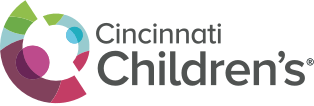What are the Symptoms of TSC and Associated Conditions?
Your child’s symptoms may be very subtle in the beginning. Seizures and / or white patches on the skin are often the first signs of the condition.
Seizures and Epilepsy
Nearly all children with TSC will have some symptoms related to how the brain works. Roughly 80-90% of children with TSC have epilepsy or experience generalized or partial seizures. Medicines can help lessen these symptoms.
Infantile spasms seizures may occur in about a third of children and most often occur when a child is between 3 and 10 months old. During an infantile spasm, a child’s head, abdomen, arms and legs may jerk briefly. The child may cry during and after the episodes. Infantile spasms often occur when first waking up from sleep and may occur regularly for a period of days, go away and then begin again. Medicines may provide relief from these spasms.
Lesions in the Brain
Tuberous sclerosis complex was named after a commonly associated brain lesion, called a cortical tuber. These non-cancer (benign) lesions usually form on the outside surface of the brain. Other types of brain lesions called nodules may occur deeper inside the brain.
The nodule brain lesions may grow in roughly 20% of those affected with TSC. Depending on their location, they may block the flow of fluid in the brain. As fluid builds up, a child may have an increase in seizures, headaches and vision problems. A medication is prescribed to shrink the nodules and reverse the symptoms.
Screening for these changes should take place regularly so that concerning growth can be addressed promptly.
Skin
Your child may have white patches on the face, body or fingernails, most of which are present at birth. The doctor may need an ultraviolet light to see these white patches.
As your child gets older, they may develop a rash on the nose and cheeks in a butterfly shape (facial angiofibroma). They may also see small skin nodules (bumps) develop around fingernails and toenails, and fibrous tissue on the forehead, neck or back.
None of these skin conditions are harmful to your child.
Kidney
Lesions caused by TSC in the kidney are very common and may cause a change in kidney function. Screening for these lesions and checking kidney function over time are both part of routine TSC care.
Heart
The majority of children with TSC are born with benign heart tumors (cardiac rhabdomyomas). These tumors may show up in an ultrasound before birth or are identified in the first year of life, at which time a referral to a cardiologist is given. These tumors often reduce in size on their own as the child grows.
If a child has heart rhythm disturbances or "flutters," they usually see a cardiologist again for evaluation.
Eye
About half of all children with TSC will have retinal (eye) lesions. These rarely impact vision.
Occasionally, some section of the retina, iris or eyelashes will have little or no color / pigmentation.
Developmental and Behavioral Symptoms
The largest challenges for children with TSC and their families are developmental and behavior disorders caused by the way TSC affects the brain’s functions. Most children with tuberous sclerosis will have some degree of difficulty with learning, and roughly half of children will have one or more of the following:
Some children may have normal development and intelligence compared to other children but may still face mild learning disabilities.




